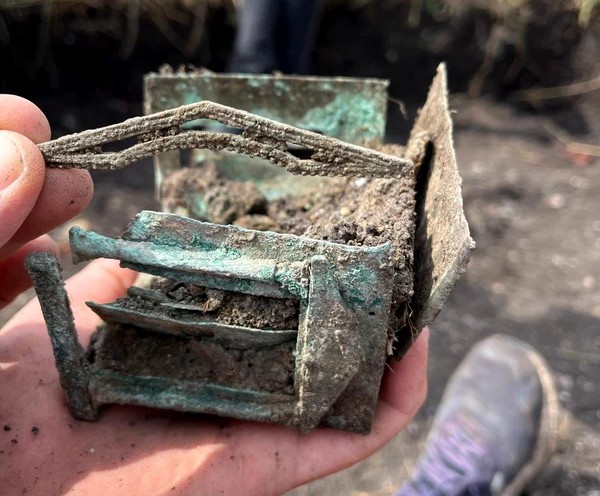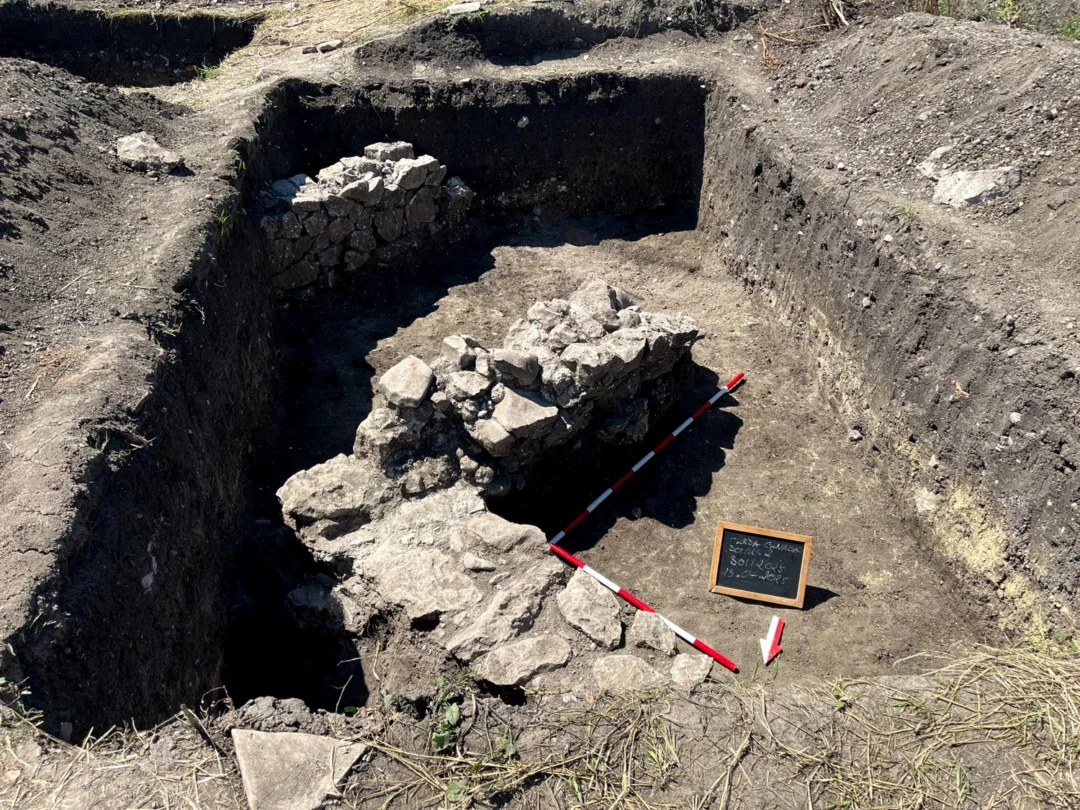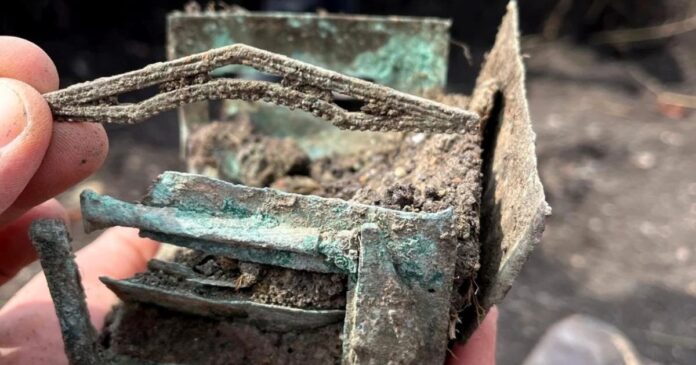Archaeologists in Turda (ancient Potaissa) discovered a remarkable bronze box decorated with a temple façade. It is a unique artifact from the former Roman province of Dacia.
They found it during the latest excavation in the canabae, a civilian settlement near the fort of Legio V Macedonica. The discovery reveals new clues about daily life on Rome’s frontier.
The Turda History Museum notes that the box remains perfectly preserved. It likely served a ritual or religious purpose, offering a rare glimpse into Roman domestic spirituality.

Excavating a Roman Home Beside the Legion
The History Museum of Turda led the archaeological campaign in partnership with Babeș-Bolyai University, UMFST, and the National History Museum of Transylvania.
In four excavation trenches, researchers uncovered the foundations of a Roman domus, a high-status house once standing inside the canabae.
In addition, the team uncovered traces of a portico and two furnaces, and researchers continue to investigate their exact functions. Together, these findings reveal a well-organized civilian district closely connected to the nearby Roman garrison and highlight the daily life of people who lived and traded alongside the legion.

Artifacts That Tell a Frontier Story
Beyond the bronze box, the dig produced an impressive array of objects: jewelry such as a bracelet, bronze ring, and glass beads; bone hairpins and belt appliqués; and even decorative furniture pieces, including a bronze tripod leg shaped like a mythical creature.
Several Roman coins and cult objects were also unearthed. Together, these finds paint a vivid picture of a thriving settlement where Roman, local, and spiritual influences blended.
The discovery of the temple-like bronze box stands out as a symbol of cultural synthesis — a sacred artifact linking the military world of Rome with the enduring beliefs of Dacia’s frontier.
You may want to read this: Roman-Period Lion-Head Bronze Discs and Handles from Khirbat Ibreika

